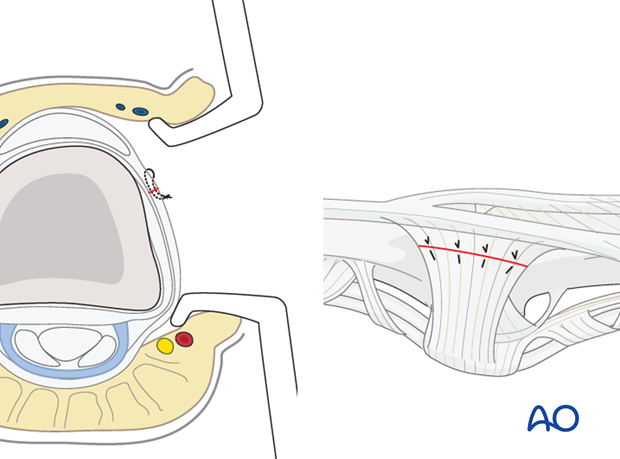Midaxial approach to the middle phalanx
1. Indications for the midaxial approach
The midaxial approach is indicated for oblique, spiral, comminuted, or transverse fractures of the diaphysis, or metaphysis, of the middle phalanx.

Nerve identification
Blunt dissection extends the approach into the thin subcutaneous tissue, taking care to identify and protect the dorsal sensory branches of the radial, ulnar, and median nerves.
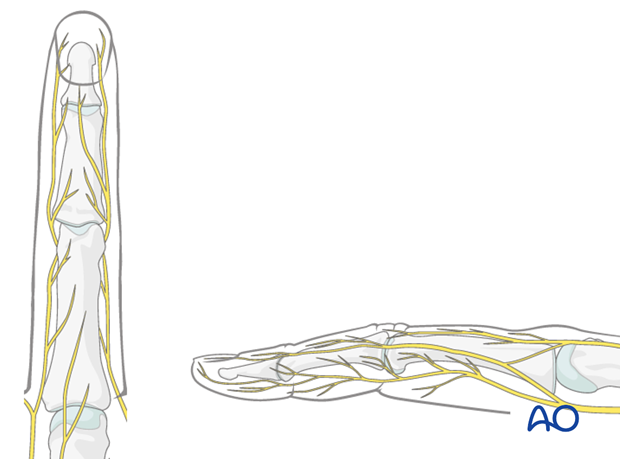
Vein identification
The dorsal venous system of the fingers has longitudinal and transverse branches. Be careful to preserve the longitudinal branches. The transverse branches may be ligated, or cauterized with a bipolar cautery, for better exposure, but preserve as many dorsal veins as possible to avoid possible congestion and swelling.
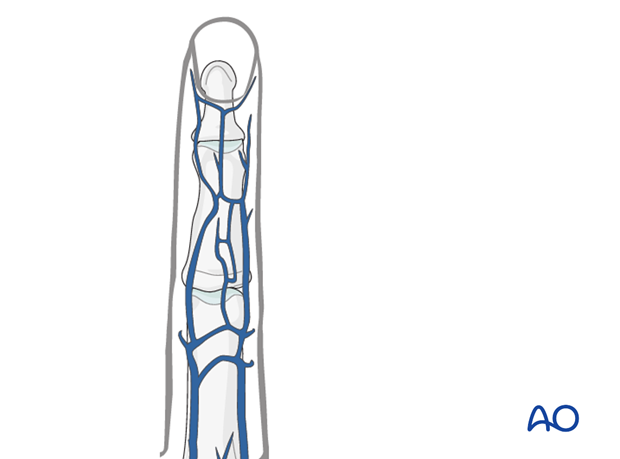
2. Planning the incision
For planning the plane of the incision, fully flex the finger as shown and mark the ends of the joint skin creases with dots.
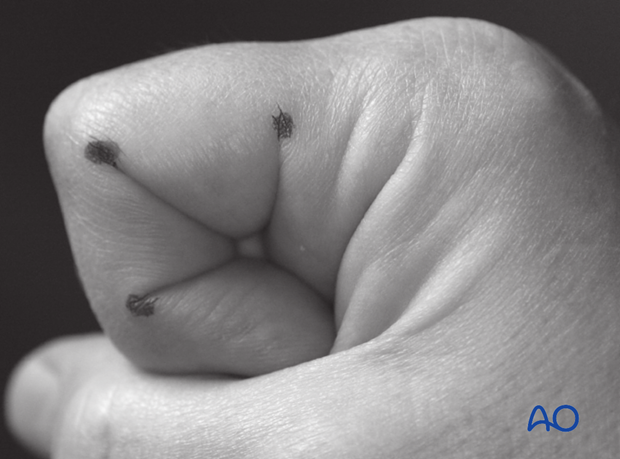
Extend the finger and connect the dots in a line.
The resulting line is safe for a skin incision. The digital artery and digital nerve will be palmar to this line.
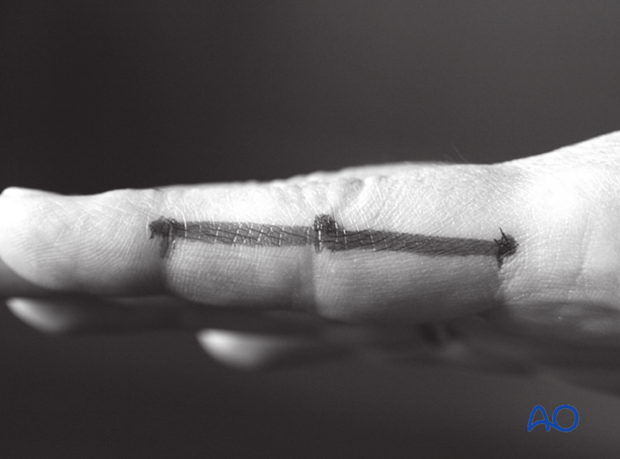
3. Skin incision
Make a skin incision from A to B. For further exposure, the incision can be extended proximally.

4. Blunt dissection
Elevate the thin subcutaneous tissues by blunt dissection. Identify and protect the digital vessels and nerve on the palmar aspect, and gently retract them.
The transverse retinacular ligament (TRL) is now exposed.
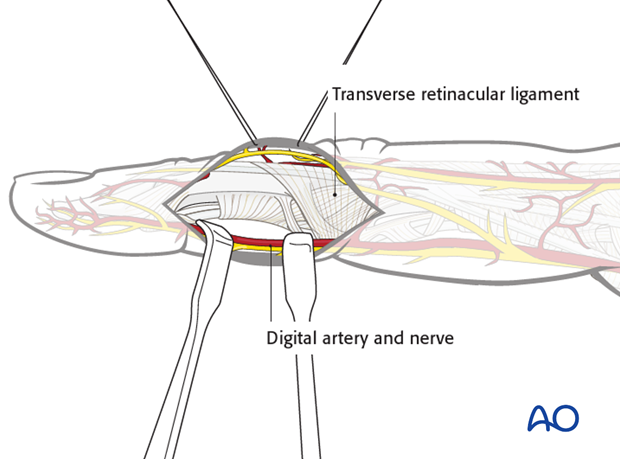
5. Division of the transverse retinacular ligament (TRL)
Divide the TRL, using a dental pick inserted between it and the collateral ligament, to avoid accidentally cutting the collateral ligament.
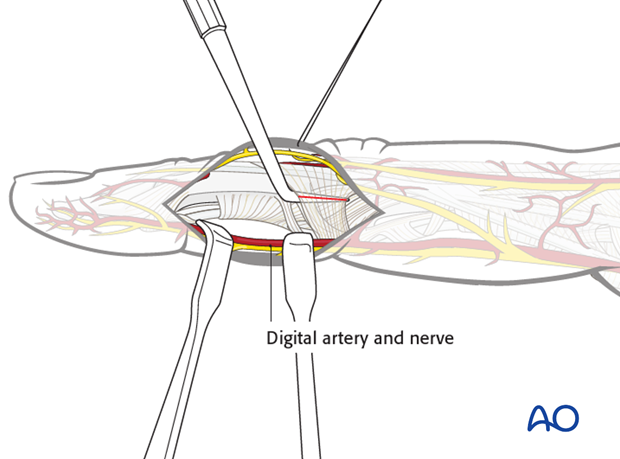
6. Exposure of the fracture
The dorsal fringe of the TRL is then elevated dorsally with the lateral band to expose the collateral ligament. The palmar remainder of the TRL is retracted in a palmar direction, using two fine sutures.
This exposes the fracture extraperiosteally. The periosteum is elevated only immediately adjacent to the fracture line(s).

7. Wound closure
The TRL is repaired using multiple fine mattress sutures prior to skin closure.
